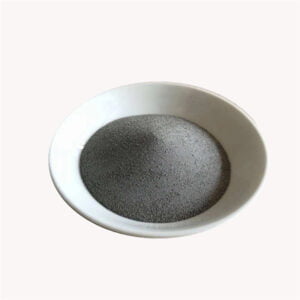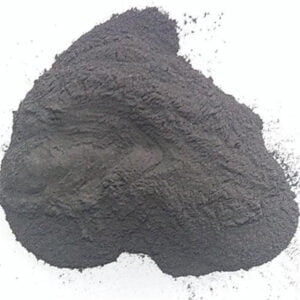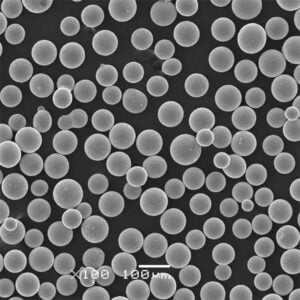3D Printing Metal Powder suitable for SLM
Innehållsförteckning
Tänk dig att skapa invecklade metallföremål med exakt precision, lager för lager, från din egen verkstad. Detta är inte science fiction; det är verkligheten med Selective Laser Melting (SLM), en revolutionerande 3D-utskriftsteknik som förändrar tillverkningen. Men i hjärtat av denna process finns en avgörande ingrediens: metallpulver.
Metallpulver för SLM
Metallpulver för SLM är inte som vanlig sand från stranden. Dessa specialpulver är noggrant konstruerade med specifika partikelstorleksfördelningar, flödesegenskaper och kemiska sammansättningar för att säkerställa optimal prestanda i SLM-processen.
Här är en tabell som sammanfattar de viktigaste egenskaperna hos metallpulver för SLM:
| Karaktäristisk | Beskrivning |
|---|---|
| Fördelning av partikelstorlek | Smal och kontrollerad fördelning för exakt skiktbildning och minimal porositet. |
| Flytbarhet | Utmärkta flödesegenskaper för jämn spridning av pulvret under tryckprocessen. |
| Sfäriskhet | Sfäriska eller nästan sfäriska partiklar för effektiv packning och lasersmältning. |
| Kemisk sammansättning | Skräddarsydd sammansättning för att uppnå önskade mekaniska egenskaper och funktionalitet i den tryckta delen. |
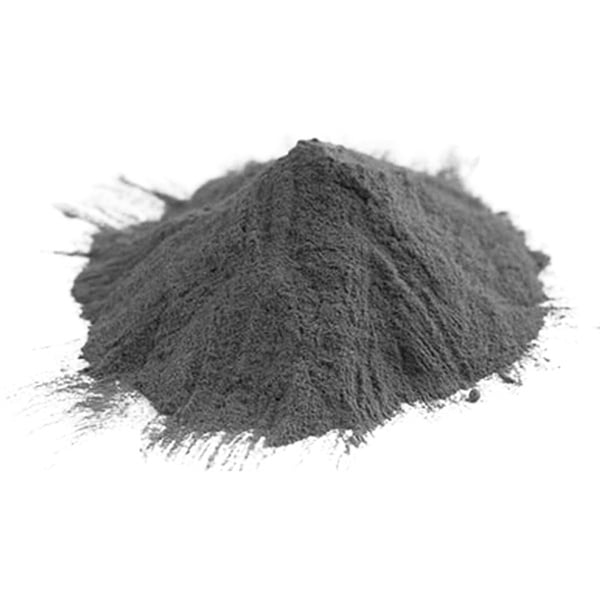
Utforska olika metallpulver
Inom SLM-metallpulver finns det en mängd olika alternativ som alla erbjuder unika fördelar och passar specifika applikationer. Låt oss fördjupa oss i 10 populära val av metallpulver:
- 316L rostfritt stål: Ett mångsidigt och välanvänt alternativ som erbjuder utmärkt korrosionsbeständighet, goda mekaniska egenskaper och biokompatibilitet. Tänk: medicinska implantat, komponenter för flyg- och rymdindustrin och kemisk processutrustning.
- 17-4 PH rostfritt stål: Känd för sin höga hållfasthet och hårdhet efter värmebehandling, idealisk för applikationer som kräver hållbarhet och slitstyrka. Föreställ dig: kugghjul, axlar och verktyg för krävande miljöer.
- Titanlegeringar (Ti6Al4V): Ett lättviktsalternativ med exceptionellt förhållande mellan styrka och vikt, biokompatibla egenskaper och utmärkt korrosionsbeständighet. Bild: flyg- och rymdkomponenter, biomedicinska implantat och sportartiklar.
- Aluminiumlegeringar (AlSi10Mg): Kombinationen av god hållfasthet, duktilitet och lättviktsegenskaper gör det lämpligt för applikationer som kräver viktreduktion och formbarhet. Tänk på: fordonskomponenter, värmeväxlare och prototyper.
- Inconel 625: En högpresterande nickel-krom-superlegering som är känd för sin exceptionella hållfasthet vid höga temperaturer, oxidationsbeständighet och motståndskraft mot tuffa miljöer. Föreställ dig: komponenter till jetmotorer, kärnreaktorer och utrustning för kemisk bearbetning.
- Koboltkrom (CoCr): Ett biokompatibelt material med utmärkt slitstyrka och korrosionsbeständighet, som ofta används inom det medicinska området för implantat som ledproteser.
- Koppar: Den höga termiska och elektriska ledningsförmågan gör den lämplig för kylflänsar, elektriska komponenter och applikationer som kräver effektiv värmeavledning.
- Verktygsstål: Finns i olika kvaliteter för specifika tillämpningar och erbjuder hög hårdhet, slitstyrka och varmbearbetningskapacitet. Tänk: skärande verktyg, matriser och formar.
- Ädelmetaller (guld, silver etc.): Används för att skapa smycken, dekorativa föremål och applikationer som kräver hög ledningsförmåga eller specifika optiska egenskaper.
- Framväxande alternativ: Området SLM-metallpulver utvecklas ständigt, med nya material som molybden, tantal och till och med metallkeramiska kompositer framväxande för specialiserade applikationer.
Kom ihåg det: Denna lista är inte uttömmande, och valet av metallpulver beror i slutändan på dina specifika projektkrav och önskade egenskaper.
Tillämpningar av metallpulver i SLM
Användningsområdena för SLM-metallpulver är lika varierande som materialen själva. Här är några viktiga områden där SLM gör vågor:
| Industri |
|---|
| Aerospace: Lättvikts- och höghållfasta komponenter för flygplan, rymdfarkoster och satelliter. |
| Medicinsk: Biokompatibla implantat, proteser och kirurgiska instrument. |
| Fordon: Lättvikts- och högprestandakomponenter för motorer, växellådor och fjädringssystem. |
| Konsumentvaror: Smycken, sportartiklar och skräddarsydda designföremål. |
Dyka djupare: Specifikationer, storlekar, kvaliteter och standarder
Att välja rätt metallpulver för ditt SLM-projekt kräver att du fördjupar dig i djupare detaljer som specifikationer, storlekar, kvaliteter och standarder. Här är en uppdelning för att vägleda dig:
Specifikationer:
- Fördelning av partikelstorlek: Mäts vanligen i mikrometer (µm) och uttrycks som ett intervall (t.ex. 15-45 µm). En smalare fördelning ger bättre skiktbildning och minskar porositeten.
- Sfäriskhet: Mäts som en procentsats som anger hur nära partiklarna är perfekta sfärer. Högre sfäriskhet förbättrar packningstätheten och lasersmältningens effektivitet.
- Kemisk sammansättning: Definieras av de specifika elementen och deras procentandelar i pulvret. Detta påverkar direkt de slutliga egenskaperna hos den tryckta delen.
Storlekar:
Metallpulver för SLM finns i allmänhet tillgängliga i en rad olika partikelstorlekar, typiskt mellan 15 och 100 mikrometer. Den optimala storleken beror på den specifika tillämpningen och de önskade egenskaperna. Finare pulver ger t.ex. jämnare ytfinish men kan vara svårare att få att flöda fritt.
Betyg:
Metallpulver finns i olika kvaliteter, som ofta betecknas med siffror eller bokstäver. Dessa kvaliteter innebär renhetsgrad, specifik kemisk sammansättning eller ytterligare behandlingar applied to the powder. For instance, a higher grade of stainless steel powder might have a lower carbon content, leading to improved corrosion resistance.
Standarder:
Several international and national standards govern the quality and specifications of metal powders for SLM. These standards ensure consistency, safety, and performance reliability. Some prominent examples include:
- ASTM International (ASTM): Develops and publishes technical standards for various materials, including metal powders for additive manufacturing.
- EOS GmbH: A leading manufacturer of SLM machines also publishes material data sheets and application guidelines for specific metal powders they offer.
- German Institute for Standardization (DIN): A German national organization that publishes standards for various industries, including additive manufacturing.
Leverantörer och prissättning
Finding the right supplier for your chosen metal powder is crucial. Here are some factors to consider:
- Anseende och erfarenhet: Choose a reputable supplier with experience in supplying high-quality metal powders for SLM.
- Material options: Look for a supplier offering a diverse range of metal powders to cater to your specific needs.
- Teknisk support: Ensure the supplier provides adequate technical support and guidance to answer your questions and assist with material selection.
- Prissättning och ledtider: Compare pricing and lead times across different suppliers to find the best fit for your budget and project timeline.
Prissättning:
The cost of metal powder for SLM varies significantly depending on the chosen material, grade, and quantity. Generally, higher-performance materials like Inconel 625 and precious metals will be more expensive compared to standard stainless steel or aluminum powders. Additionally, the volume you purchase can also influence the price, with larger quantities typically commanding lower per-unit costs.
Here’s a table summarizing the typical price range for some common SLM metal powders (prices are indicative and may vary depending on supplier and market conditions):
| Metallpulver | Prisintervall (USD/kg) |
|---|---|
| 316L rostfritt stål | $50 – $100 |
| 17-4 PH rostfritt stål | $75 – $125 |
| Ti6Al4V | $100 – $200 |
| Aluminiumlegeringar (AlSi10Mg) | $30 – $50 |
| Inconel 625 | $200 – $300 |
Kom ihåg det: These prices are for informational purposes only and should not be considered definitive quotes. It’s crucial to contact potential suppliers directly for accurate and up-to-date pricing information.
Fördelar och begränsningar
Each metal powder for SLM comes with its own set of advantages and limitations. Understanding these trade-offs is essential for making informed decisions:
Fördelar:
- Designfrihet: SLM enables the creation of intricate and complex geometries, previously impossible with traditional manufacturing techniques.
- Lättvikt: Metal powders offer opportunities to create lightweight components, crucial for industries like aerospace and automotive.
- Materialegenskaper: A vast array of metal powders allows for tailoring the final part’s properties like strength, corrosion resistance, and biocompatibility.
- Minskat avfall: SLM minimizes material waste compared to traditional subtractive manufacturing methods.
Begränsningar:
- Kostnad: SLM machines and metal powders can be expensive compared to traditional manufacturing methods.
- Begränsningar av byggstorleken: Current SLM machines have limitations on the size of parts they can produce.
- Ytjämnhet: SLM-printed parts may require additional post-processing for achieving a smooth surface finish.
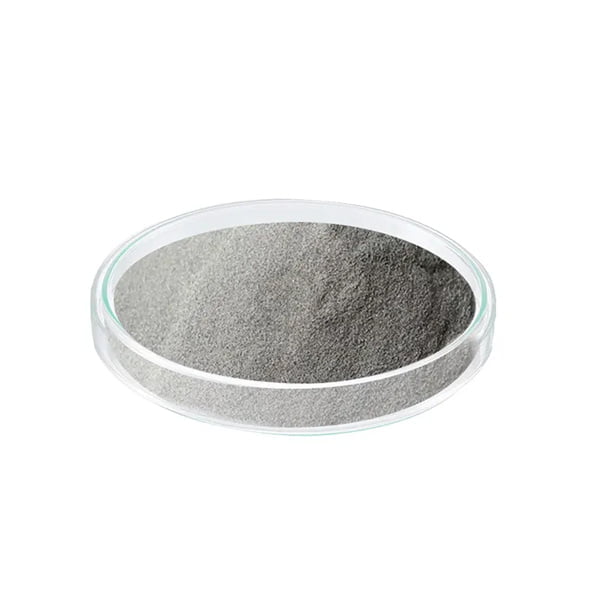
Vanliga frågor
Q: What are the safety considerations when handling metal powders?
A: Metal powders can pose a safety risk, including inhalation hazards and potential flammability. It’s crucial to follow proper safety protocols when handling metal powders, including wearing appropriate personal protective equipment (PPE) like gloves, respirators, and safety glasses. Additionally, proper ventilation and safe powder handling procedures are vital to minimize risks.
F: Hur lagras metallpulver?
A: Metal powders are often sensitive to moisture and oxygen exposure, which can affect their flowability and printability. Therefore, proper storage is crucial. Metal powders are typically stored in sealed containers under controlled temperature and humidity conditions.
Q: Can I recycle metal powder from failed prints?
A: In some cases, it might be possible to recycle metal powder from failed prints; however, this process requires specific equipment and expertise. Additionally, the recycled powder might not perform identically to virgin powder and may require additional processing before reuse. It’s recommended to consult the material supplier and your specific SLM equipment manufacturer for guidance on powder recycling.
Q: What are the future trends in metal powders for SLM?
A: The future of SLM metal powders is promising, with several exciting trends emerging:
- Utveckling av nya material: Researchers are continuously exploring new materials and alloys suitable for SLM, pushing the boundaries of achievable properties and functionalities.
- Improved powder characteristics: Advancements in powder manufacturing technologies are leading to powders with better flowability, tighter particle size distribution, and improved sphericity, ultimately enhancing printing performance and part quality.
- Sustainability focus: There’s a growing focus on developing sustainable metal powders made from recycled materials or utilizing environmentally friendly production processes.
These trends indicate an ever-evolving landscape of metal powders for SLM, offering exciting possibilities for the future of additive manufacturing.
Dela på
MET3DP Technology Co, LTD är en ledande leverantör av lösningar för additiv tillverkning med huvudkontor i Qingdao, Kina. Vårt företag är specialiserat på 3D-utskriftsutrustning och högpresterande metallpulver för industriella tillämpningar.
Förfrågan för att få bästa pris och anpassad lösning för ditt företag!
Relaterade artiklar

Högpresterande segment för munstycksvingar: Revolutionerande turbineffektivitet med 3D-utskrift i metall
Läs mer "Om Met3DP
Senaste uppdateringen
Vår produkt
KONTAKTA OSS
Har du några frågor? Skicka oss meddelande nu! Vi kommer att betjäna din begäran med ett helt team efter att ha fått ditt meddelande.

Metallpulver för 3D-printing och additiv tillverkning
FÖRETAG
PRODUKT
cONTACT INFO
- Qingdao City, Shandong, Kina
- [email protected]
- [email protected]
- +86 19116340731







